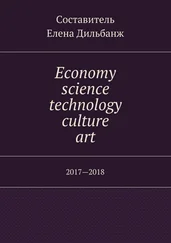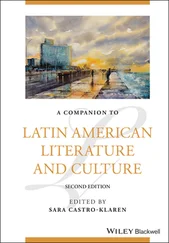91 Chapter 9.3Figure 1 Classification of man‐made vitreous wool used for insulation. AES, ...Figure 2 Sketch of the two main techniques for forming mineral wool. (a) Cas...Figure 3 Viscosity–temperature relationships of stone and glass wool melts i...Figure 4 Phase transformations of a stone wool composition as observed in a ...Figure 5 Enthalpy relaxation of stone and glass wool samples determined in D...Figure 6 Effect of fiber diameter (as d −1) on mechanical properties o...Figure 7 Increases of tensile strength σ tswith the axial drawing stres...Figure 8 Effect of pH and chemical composition on the dissolution rate of gl...
92 Chapter 9.4Figure 1 Low‐iron glasses in photovoltaic cells. Left: first‐generation Si m...Figure 2 Spectral transmittance and loss of photon flux of different float g...Figure 3 Glass transition temperature T gof glasses used in solar‐energy con...Figure 4 Solar water heaters. Left: rooftop receiver with in‐house boiler an...Figure 5 Spectral transmittance and solar‐energy loss of 4 mm‐thick low‐iron...
93 Chapter 9.5Figure 1 Comparison between the structure of thin‐film (a) bulk‐type (b) all...Figure 2 Relationship between the electrical conductivity and the microstruc...Figure 3 Sketch of three procedures used to ensure favorable electrode–elect...Figure 4 Initial charge–discharge curves of all‐solid‐state In/LiCoO 2cells ...Figure 5 Charge–discharge curves of all‐solid‐state Li‐In/S and In/Li 2S cell...
94 Chapter 9.6Figure 1 Float lines in Europe, North America, and Middle East/Africa (from ...Figure 2 Increases of the number of float lines in Europe, North America, an...Figure 3 Float lines as of early 2013.Figure 4 Decrease of the price of clear flat glass in Western Europe from 19...Figure 5 Divergence between the prices of flat glass in Western Europe and i...
95 Chapter 9.7Figure 1 Regenerative fired furnaces for container glass. (a) End‐fired, sta...Figure 2 Specimens of other types of furnaces. (a) Recuperative furnace for ...Figure 3 Sketch of a dam wall in the melter of a glass furnace.Figure 4 A view over a wool‐glass bath through the peep hole of the melter....Figure 5 The two nozzle of gas burners (a) and the resulting gas flow (b)....Figure 6 Individual components of an end‐fired regenerative furnace.A. Reg ...Figure 7 Energy consumption as a function of specific load (t/d.m 2) used to ...Figure 8 Interplay of factors involved in NO xand SO xemissions.Figure 9 Evolutions of overall energy efficiency and emissions of NO x, SO x, ...
96 Chapter 9.8Figure 1 Fundamental parameters controlling a furnace in its dual functions ...Figure 2 Heat balance of a fuel‐fired furnace equipped with a flue‐gas heat‐...Figure 3 Efficiency of a glass furnace as a function of the heat capacity‐fl...Figure 4 Model of radiative heat exchange between combustion and melting spa...Figure 5 The influence of the pull rate, p , on the operation of a glass furn...Figure 6 Mass input–output characteristics of chemical reactors. (a) Ideal m...Figure 7 Experimental data of F ( z ) (symbols) presented in a plot W = ln[−ln(...Figure 8 Comparison between tracer residence times in a double‐convection fu...Figure 9 Comparison between calculated and measured temperature profiles for...Figure 10 Simplified picture of the glass convection flow within a melter.Figure 11 Temperature profiles and melt flow pattern in a flat‐glass furnace...Figure 12 Complete modern furnace simulation model of an end‐port, container...
97 Chapter 9.9Figure 1 Hierarchy for glass waste.Figure 2 Estimation of waste glass generated by municipal solid waste.Figure 3 Cullet treatment process. CSP, rejects of ceramic, stones, and porc...Figure 4 Mixed glass cullet.Figure 5 Sketch of a typical sorting machine for cullet.
98 Chapter 9.10Figure 1 Sketch of an incineration plant from waste delivery to incineration...Figure 2 The heterogeneous nature of bottom ash. (a) As seen with the eye. (...Figure 3 A scrap glass fragment of bottom ash shown in a backscattered scann...Figure 4 Transparent glass with yellow and brown schlieren . In the dark part...Figure 5 Crystallization of oxides and pyroxene along the dark schlieren in ...Figure 6 The heterogeneity of fly ash as seen in a backscattering electron i...
99 Chapter 9.11Figure 1 Operation of industrial vitrification plants around the world.Figure 2 Pd–Te (spherical) and RuO 2(needle‐shaped) metallic precipitates un...Figure 3 Partially crystallized beads enriched in molybdenum, phosphorus, an...Figure 4 Summary of the distinct stages of nuclear glass corrosion and relat...Figure 5 Two‐step vitrification process of nuclear waste with either “cold” ...Figure 6 Sketch of an LFCM liquid‐fed ceramic melter equipped with a bottom ...
100 Chapter 9.12Figure 1 The formal atmosphere of a meeting of glass scientist in 1928 in Aa...Figure 2 The 1967 (a) and 1994 (b) ICG logos.Figure 3 The 2010 ICG symbol.
101 Section XFigure 1 Through 25 centuries of glassmaking, an art travel at the Glasmuseu...Figure 2 Ingots of Roman glasses similar to those known by Pliny as conserve...
102 Chapter 10.1Figure 1 World map of obsidian sources utilized in ancient times. In the wes...Figure 2 Balata dei Turchi (southern side of Pantelleria, Italy) primary obs...Figure 3 Obsidian blocks (up to 40 cm in length), cores (up to 15 cm), blade...Figure 4 An obsidian sample sitting on a portable XRF instrument for the des...Figure 5 Trace element graph distinguishing Mediterranean obsidian sources....Figure 6 Multiple flows (subsources) may be distinguished on the islands of ...Figure 7 Bar chart showing source frequencies for Early Neolithic (a) and La...Figure 8 Sites with 10 or more artifacts tested (circles by the author, squa...
103 Chapter 10.2Figure 1 Blue glass lump from Eridu, believed to date to the late third mill...Figure 2 Heart amulet, Egyptian 18th Dynasty, late fourteenth century BCE (2...Figure 3 Inlay, Egyptian from Thebes, 18th dynasty (33 × 26 cm, British Muse...Figure 4 (a) Egypt (cosmetic jug, 18th dynasty, 24 × 30 cm; British Museum 2...Figure 5 The clear distinction between glasses found (and therefore thought ...Figure 6 The higher resolution of isotopic analyses: distinguishing glass ma...
104 Chapter 10.3Figure 1 Array of excavated floors of tank furnaces at Bet Eli'ezer, near Ha...Figure 2 Model for Roman glass production as currently understood. Egyptian ...Figure 3 Main compositional groups of the first millennium CE as determined ...Figure 4 The Lycurgus Cup (fourth c. CE) depicting the myth of King Lycurgus...Figure 5 Mosaic‐footed glass bowl, Victoria and Albert Museum 969–1868. Made...Figure 6 A range of forms displayed by a selected group of blown Roman‐glass...Figure 7 Typical mixing line between Roman antimony‐decolorized glass, with ...
105 Chapter 10.4Figure 1 Head of an Egyptian priest made of vitreous material (c. seventh ce...Figure 2 Oil lamp with the illustration of an artisan blowing glass in a pip...Figure 3 Pharmaceutical and chemical (?) glassware found in the Casa del Fab...Figure 4 Garden of Eden mosaic decorating the vault of the Galla Placidia Ma...Figure 5 Glass alchemical alembics illustrating the Codex Parisinus 2327 thi...
106 Chapter 10.5Figure 1 Viscosity ranges for glassworking operations and viscosity–temperat...Figure 2 Gathering of 1–3 g mosaic glass florets (slices) on a blowpipe: fin...Figure 3 Rotary scratches on the interior of a ribbed bowl fragment (Frankfu...Figure 4 Rotary scratches exhibiting horseshoe chattermarks so much shortene...Figure 5 Core‐forming furnace open at the top (height 52 cm) as designed and...Figure 6 Rotary pressing: gob of hot glass pressed with a moist wooden plung...Figure 7 Making of a ribbed bowl: sagging or flowing down of hot glass over ...Figure 8 Making of spiral reticella vessel: drawing of the thread from a rot...Figure 9 Making a Cretan pyxis : cylindrical plunger pressed into a gob of ho...Figure 10 Making of a bulbous colorband bottle: preheated colorband disk or ...Figure 11 Fragments of inflated tubes from a first century BCE Jerusalem wor...Figure 12 Pontil attachment on a newly blown glass.Figure 13 Replica of five‐part mold for a beaker, showing mythological scene...Figure 14 Mold blowing: loading of the parison in the sooted, five‐part mold...Figure 15 The basketry pattern of a cylindrical jug (height 21 cm). Syro‐Pal...Figure 16 Hellenistic sandwich gold glass bowl (height 10.7 cm, rim diameter...Figure 17 Three‐step making of gold glass : pressing of the gob of the outer ...Figure 18 Cameo glass: the Portland vase (height 24.5 cm, maximum body diame...Figure 19 Two step‐making of a cameo glass: model of wax or clay serving for...Figure 20 Diatrete, Cage cup (preserved height 12.1 cm, rim diameter 10.1 cm...Figure 21 Four‐step making of a double‐walled blank for subsequent cutting o...
Читать дальше












